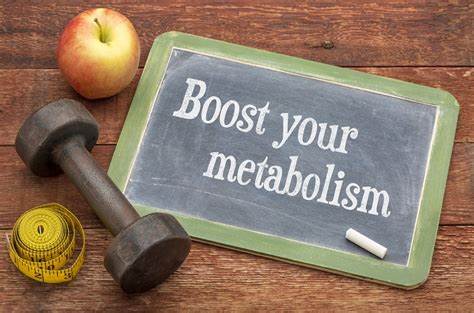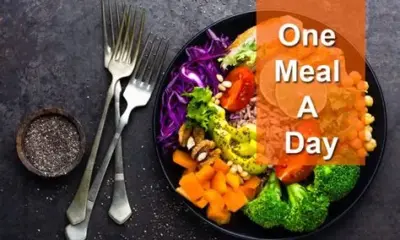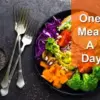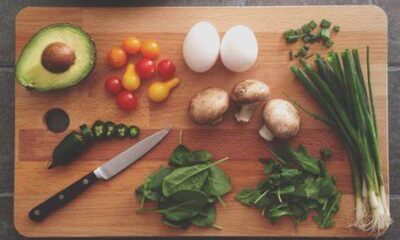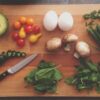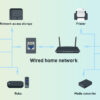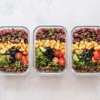How-To
How to Boost Metabolism with Natural Foods
Learn how to meal prep for weight loss beginners. Step-by-step guide covers planning, shopping, cooking, and storing healthy, portion-controlled meals.
Starting a weight loss journey can feel overwhelming, but meal prepping is one of the most effective strategies to stay on track. For beginners, it simplifies healthy eating, reduces reliance on quick, unhealthy options, and helps control portion sizes. This guide will break down how to meal prep for weight loss beginners into manageable steps, focusing on simplicity, consistency, and sustainable habits.
Why Meal Prep for Weight Loss?
Meal prepping offers significant advantages for weight loss beginners:
- Portion Control: Pre-portioned meals eliminate guesswork and prevent overeating.
- Time-Saving: Reduces daily cooking time, especially on busy weekdays.
- Cost-Effective: Less money spent on takeout, delivery, or unhealthy convenience foods.
- Reduced Decision Fatigue: No need to figure out what to eat for every meal, reducing the likelihood of impulsive, unhealthy choices.
- Consistent Healthy Eating: Ensures you always have nutritious, balanced meals ready.
- Avoidance of Temptation: Less likelihood of reaching for unhealthy snacks when hunger strikes.
Key Principles for Beginner Weight Loss Meal Prep
- Keep it Simple: Don’t overcomplicate recipes or try to prep too many different meals at once.
- Focus on Macronutrients: Aim for a balance of lean protein, complex carbohydrates, and healthy fats.
- Prioritize Vegetables: Load up on non-starchy vegetables for volume and nutrients with low calories.
- Batch Cook: Cook larger quantities of staple ingredients.
- Invest in Containers: Good quality, portion-controlled containers are essential.
Step-by-Step Guide: How to Meal Prep for Weight Loss Beginners
Follow these steps to successfully meal prep for weight loss as a beginner.
Phase 1: Planning Your Meals (The Blueprint for Success)
- Determine Your Calorie/Macro Needs (Optional but Recommended):
- While not strictly necessary for beginners, understanding your estimated daily calorie deficit for weight loss can be helpful. Numerous online calculators can provide a rough estimate. For simple weight loss, focusing on whole, unprocessed foods and mindful portions is often enough.
- Aim for a balance: roughly 30-40% protein, 30-40% carbs, 20-30% healthy fats. This helps with satiety and energy.
- Choose Your Meals (Start Small):
- As a beginner, don’t try to prep every single meal for the entire week.
- Start with 3-4 days of lunches and dinners, or just one meal type (e.g., just lunches for the work week).
- Select simple, repeatable recipes. Think: “protein + veggie + carb.”
- Example Meal Ideas for Beginners:
- Lunch: Grilled chicken breast, roasted broccoli, quinoa.
- Dinner: Baked salmon, mixed greens salad, sweet potato.
- Breakfast: Overnight oats with berries and a scoop of protein powder.
- Snacks: Hard-boiled eggs, Greek yogurt, apple slices with peanut butter, handful of almonds.
- Create Your Grocery List:
- List all the ingredients you need for your chosen meals.
- Organize your list by supermarket sections (produce, dairy, pantry, meat) to save time.
- Check Your Current Supplies:
- Before heading to the store, check your pantry, fridge, and freezer to avoid buying duplicates.
Phase 2: Shopping for Ingredients (Efficient Acquisition)
- Stick to Your List: This is crucial for weight loss and budget control. Avoid impulse buys, especially in snack aisles.
- Prioritize Whole Foods:
- Lean Proteins: Chicken breast, turkey, lean ground beef, fish (salmon, cod), eggs, tofu, lentils, beans.
- Complex Carbohydrates: Brown rice, quinoa, whole-wheat pasta, oats, sweet potatoes, whole-grain bread.
- Non-Starchy Vegetables: Broccoli, cauliflower, bell peppers, spinach, kale, zucchini, green beans, carrots, salad greens. Buy plenty!
- Healthy Fats: Avocados, nuts (almonds, walnuts), seeds (chia, flax), olive oil.
- Fruits: Berries, apples, oranges, bananas.
Phase 3: The Prep Session (Cooking and Assembling)
Designate a specific time for your prep session, usually 2-3 hours on a weekend.
- Gather Your Tools:
- Meal Prep Containers: Invest in good quality, BPA-free, airtight containers. Glass containers are excellent for reheating. For beginners, containers with separate compartments can help with portioning.
- Cutting boards, sharp knives, mixing bowls, baking sheets, pots, and pans.
- Start with Ingredients That Take Longest to Cook:
- Grains: Cook a large batch of brown rice or quinoa (e.g., 4-6 servings).
- Starchy Vegetables: Roast or bake sweet potatoes, potatoes.
- Proteins: Bake or grill a large batch of chicken breast, salmon fillets, or cook ground meat/turkey.
- Prepare Vegetables:
- Wash and chop all your vegetables. This saves significant time during the week.
- Roast larger quantities of vegetables like broccoli, bell peppers, or asparagus.
- Prepare fresh salad components but keep dressing separate.
- Cook Smart, Not Hard:
- One-Pan Roasting: Toss chicken or fish with chopped vegetables and seasoning on a single baking sheet.
- Sheet Pan Meals: Cook multiple components simultaneously.
- Slow Cooker/Instant Pot: Use these for large batches of stews, chili, or shredded chicken/pork.
- Cool Down Before Storing:
- Let all cooked food cool completely to room temperature before portioning and sealing. This prevents condensation and bacterial growth.
- Portion and Package:
- Divide your cooked food into individual meal prep containers according to your desired portion sizes.
- Keep wet ingredients (like dressings or sauces) separate until just before eating.
- Label containers with the meal and date, especially if prepping for more than a few days.
Phase 4: Storage and Reheating (Maintaining Freshness and Safety)
- Refrigeration:
- Most prepped meals will last 3-4 days in the refrigerator.
- Place meals in the coldest part of your fridge.
- Freezing (for longer storage):
- Many meals can be frozen for up to 1-3 months.
- Good candidates for freezing: cooked grains, cooked proteins (chicken, ground meat), soups, stews, chili.
- Avoid freezing: leafy greens, watery vegetables (like cucumber), and foods that lose texture upon thawing (e.g., cooked pasta can get mushy).
- Thaw frozen meals overnight in the refrigerator before reheating.
- Reheating:
- Microwave: The quickest option. Remove lids or use microwave-safe containers.
- Oven/Toaster Oven: Good for roasted vegetables or proteins to regain some crispness. Use oven-safe dishes.
- Stovetop: For reheating soups, chili, or stir-fries.
My Personal Experience with Beginner Meal Prep
When I first started trying to lose weight, my biggest hurdle was making healthy choices when I was already hungry and tired after a long day. I’d come home, open the fridge, see nothing prepped, and inevitably order takeout. Meal prepping seemed intimidating at first – all those Instagram photos of perfectly organized fridges! But I started small. I picked one simple recipe: baked chicken, roasted broccoli, and brown rice. I cooked a big batch on Sunday, portioned it into four containers, and that was it. Just having those four lunches ready made a huge difference. I saved money, consistently ate healthier, and avoided those impulsive, unhealthy dinner decisions. It wasn’t about being perfect; it was about being prepared, and that small step snowballed into a sustainable habit.
Conclusion
Meal prepping for weight loss beginners is a powerful habit that simplifies healthy eating and supports your goals. By focusing on simple planning, smart shopping, efficient cooking, and proper storage, you can consistently provide yourself with nutritious, portion-controlled meals. Start small, build consistency, and adapt the process to fit your lifestyle. With each successful meal prep session, you’ll gain confidence and make significant strides towards your weight loss goals.


